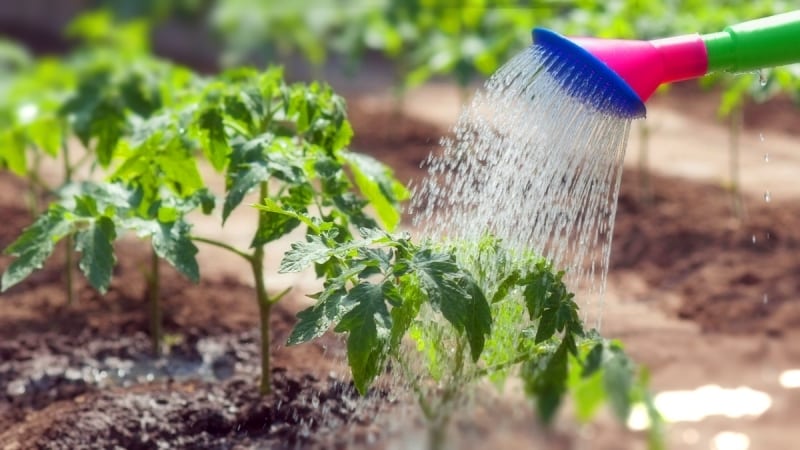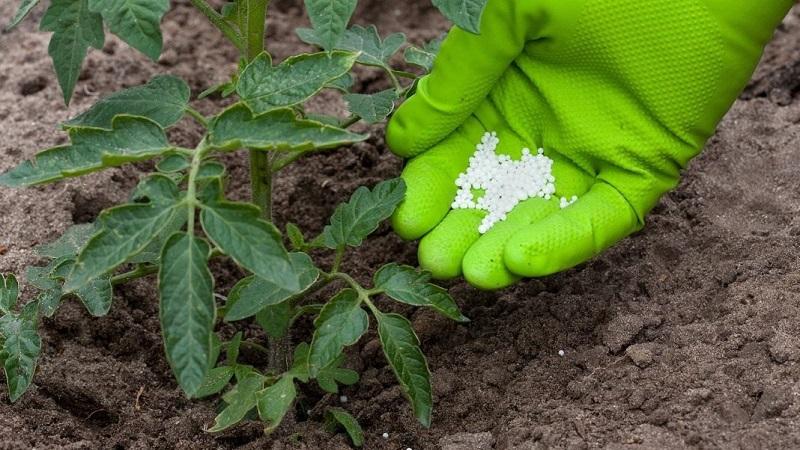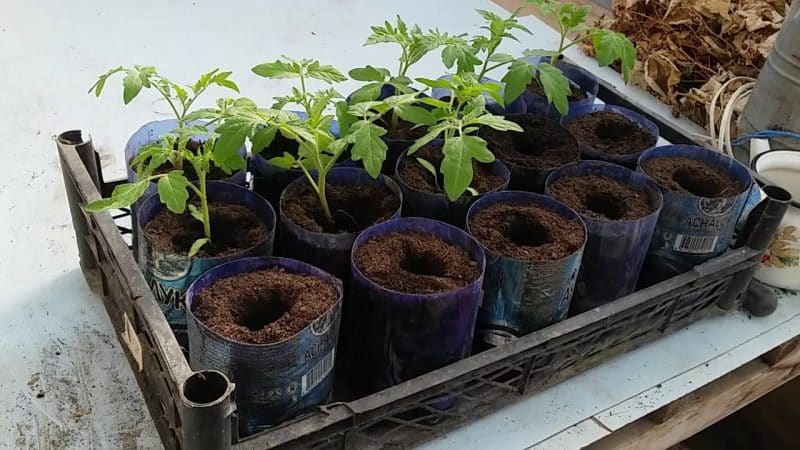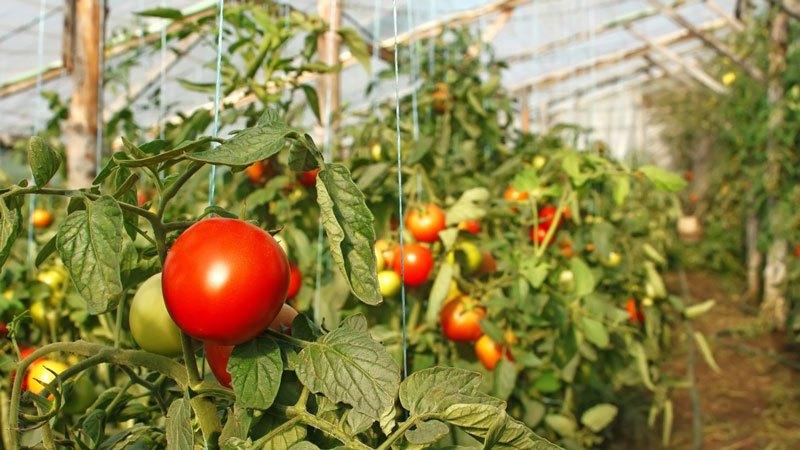Correcting mistakes in growing tomatoes: why tomatoes don’t grow in a greenhouse and what to do about it
One of the most common crops grown by gardeners is tomatoes. However, even experienced summer residents often wonder: why don’t tomatoes grow in a greenhouse? There are many reasons for this, from improper plant replanting to variety degeneration.
From the article you will learn what factors influence the cultivation of tomatoes and how to eliminate the main mistakes of farmers.
Why tomatoes don't grow - possible reasons
Let's consider the main reasons for the lack of fruiting and growth of tomatoes. In most cases, this occurs due to a combination of several factors.
Wrong pick
A prerequisite for strong seedlings is picking. With this procedure, plants build up a powerful root system and take root better when planted in a permanent location. To carry out a pick, a specially pointed stick is required, which is called a “pique”.
Common mistakes at this stage include burying seedlings above the growth point and lack of disinfection, which does not allow the seedlings to cope with bacteria on their own.
Untimely and improper watering
If you do not comply with the conditions glaze, the seedlings will also grow poorly.
Excessive watering can cause it to rot. At the same time, when setting fruit, the soil should not be allowed to dry out, as this will lead to shedding of flowers, which will reduce the number of ovaries. The humidity percentage should be 75%.

Insufficient carbon nutrition
Important feed plants during the period of enhanced photosynthesis, when it is hot in the greenhouse for a long time and the weather is sunny outside. If this is not done, in the future it will negatively affect their growth and fruit set.
Violation of the temperature regime in the greenhouse
Tomatoes will not grow well if the temperature in the greenhouse is less than +15°C and more than +28°C. In this case, pollen maturation will slow down and a bountiful harvest will be at risk. Therefore, an important nuance is maintaining the temperature regime.
Lack of nutrition

Many gardeners are unable to grow tomatoes due to insufficient nutrition. When growing, do not forget that tomatoes require fertilizing.
At the same time, the norm cannot be exceeded: for example, excessive nitrogen content causes increased growth of vegetative mass, which has a bad effect on yield.
Soil with a low copper content and a large amount of organic matter provokes the appearance of chlorosis on the leaves.
Attention! An insufficient amount of sulfur in the soil leads to yellowing of the leaves.
Degeneration of grade
When growing tomatoes, some gardeners give preference to one variety, planting it every year. For example, due to large fruits or other reasons. As a result, summer residents have to deal with a deterioration in the quality of plants - a change in the best properties of the variety in a negative direction.
Diseases and pests
Often, slow seedling growth is associated with disease. The main ones:
- Late blight. Fungal infection of the plant, which can be stopped by treating it with Trichodermin (20 days after planting).
- Septoria. This is also a fungal disease, which can be dealt with using the “Phytodoctor” solution (20 ml diluted in 10 liters of water), which is used to spray the seedlings after filtering.
- Powdery mildew. Leaf mold, which can be combated with biofungicide solutions. The treatment is repeated every 10-12 days.
Pests can also damage tomatoes. Particularly dangerous:
- Whitefly. You can eliminate it by treating the bushes with Confidor.
- Medvedka. It gnaws through plant roots. Disappears after treatment with the drug “Thunder” or infusion of hot pepper, vinegar solution.
- Wireworm. Treatment with the drug “Bazudin” and liming of acidic soils will help.
High air humidity
In many cases, the cause of poor ovary lies in non-compliance with air humidity. As a result, the harvest will be small, since there is no ovary on the first two clusters. If you close all the windows and doors in the greenhouse and neglect ventilation, irreparable damage will be caused to the crop.
Restoring optimal conditions
To restore optimal conditions, proper transplanting and picking, sufficient watering and nutrition of plants, as well as compliance with the temperature regime are necessary.
Incorrect pick or transplant

After the crops have sprouted, be sure to separate the planting material - weak and thin seedlings must be discarded. Use a special spatula that will protect the root system from damage. Before performing these steps, it is advisable to water the plants well and wait 20 minutes.
To properly grow seedlings, you will need light, chemically poor soil. For these purposes, peat is used, to which a small amount of ash is added, which reduces the acidity of the soil.
Picking is carried out when the second true leaf appears. The seedling is buried down to the cotyledons, and the too large root is shortened by 1/3.
Untimely and improper watering
What to do to achieve the desired result? Do not over-moisten the soil, as this can lead to rotting of the root system.
Attention! Excessive air humidity along with a lack of nitrogen can lead to yellowing of the foliage.
Insufficient carbon nutrition
The air needs to be saturated with carbon. This is especially necessary when humus and manure have been added to the soil in insufficient quantities. Therefore, a container is placed in the greenhouse where the manure will ferment. Half of it is filled with manure (if it is absent, with grass), the rest is filled with water.
Such fertilizing will significantly increase the resistance of plants to extreme conditions, especially during periods of extreme heat.
Violation of the temperature regime in the greenhouse
In order for the flowers to be pollinated normally and the ovary to form, be sure to maintain the optimal temperature:
- If the weather is sunny, then the temperature should be within 24°C.
- In cloudy weather, this figure can be at 22°C.
- At night, the optimal temperature should be within 18°C.
To get a generous harvest during the period of fruit set, you need to create favorable conditions that include low air humidity.
Lack of nutrition
If the seedlings grow weak, with a thin stem, then they do not have enough nitrogen. In some cases, a purple-scarlet tint appears on the lower part of the leaves, indicating that the seedling does not have enough phosphorus. If these symptoms are detected, it is necessary to feed the tomatoes.
Seedlings stop growing even with iron deficiency.In this case, the bush begins to turn yellow. The way out of the situation is to stop illuminating the seedlings. Tomatoes also need to be removed from the light source. If the case is severe, fertilize and spray the plants with iron-containing compounds.
Degeneration of grade
To prevent degeneration, agronomists advise updating tomato varieties every three years. If you follow these recommendations, you will increase your productivity and get large and juicy tomatoes every season.
Diseases and pests
If seedlings grow poorly due to disease, it is necessary to begin treatment immediately. In addition to the methods we have already described, consider the following recommendations:
- Transplanting into fresh soil will help save the seedlings. Before performing these steps, the roots of the plant must be washed with a solution of potassium permanganate or Fitosporin.
- Fungal infection can occur as a result of poor watering and insufficient lighting - carefully monitor the conditions in which your future crop grows.
- Loosening and watering will help solution potassium permanganate.
In addition to the methods already described, you can get rid of pests using mulching. In this case, you need to have materials impregnated with urea, such as straw and sawdust.
High air humidity

When growing tomato seedlings, maintain the optimal temperature in the greenhouse. It is imperative that a polycarbonate greenhouse be equipped with large vents in the roof. This will make it possible to eliminate excessive air humidity.
If the weather is hot, it is necessary to pay sufficient attention to creating optimal conditions for pollination of flowers. For this purpose, the glass of the greenhouse should be sprayed with a weak chalk solution.
Tips and tricks
Proper and timely care is the key to a rich harvest. Gardeners with many years of experience recommend not to water the plants in the first days of planting, but to do so only after ten days.
You can get a bountiful harvest by maintaining optimal temperatures. To do this, the greenhouse is constantly ventilated. This is done two hours after watering. On the fourth day after planting the seedlings, the tomatoes are tied up. To eliminate plant diseases, they need to be pinched. Such actions will prevent damage to tall bushes that bend under the weight of their weight.
Attention! Linear or frame trellises are excellent for gartering.
Conclusion
When growing tomato crops in a greenhouse, gardeners have to deal with the slow growth of bushes or the cessation of their development. Such phenomena arise from insufficient soil nutrition, improper watering and fertilizing. It is necessary to promptly find out the reason for stopping the development of seedlings and follow the advice of experienced gardeners.